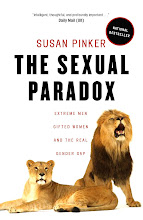
This afternoon I found a wet parking ticket plastered to my car’s windshield. A $42 dollar fine is not that remarkable, even if an enterprising police officer had issued it at 4:16 pm, 14 minutes before the posted 4:30 pm no-parking limit. The more interesting point is why I had left my car on a busy thoroughfare full of conflicting parking regulations, and not at the perfectly-legal-park-as-long-as-you-wish space I had initially found. The reason is simple. While I was looking rearward over my right shoulder, preparing to back into the world’s most beautiful spot, a 107 year-old-man rapped on my car window. I rolled it down. He then said matter of factly, as if he were resuming a long, habitual conversation with an intimate. “Chus crevé, et il mouille.” I’m dead tired and it’s raining. The bus doesn’t come by here for another half hour, and it won’t stop pouring. Can you drive me home to Drolet Street?”
I was dumbfounded at first. Every woman knows it’s against the rules to open your car door to a strange man and let him in. But this guy looked ancient and he had made a daring move. He had shattered the urban cone of silence. He had made eye contact, and seemed perfectly lucid, to boot. What would I lose other than the opportunity of showing up on time for my meeting—a rare enough occurrence—and the chance to slide into the perfect parking spot?
When I asked his age, the man in the passenger seat of my Toyota—who had shoved aside my unplugged GPS and Levon Helm CD to sit down-- answered that he was 107 years old. Was this an exaggeration? Maybe--he didn’t look a day over 90. But his only son lived out west, he told me. So the centenarian lived alone in the house he’d always lived in, a dwelling that predated cars, parking tickets and air-conditioning—all ubiquitous features of this steamy August afternoon in the city. Our time together was short—an interaction that spanned six city blocks—and when I dropped the elderly gentleman off he thanked me kindly, lisping slightly over his ill-fitting dentures.
This unlikely incident underscores two misconceptions. First, it’s a myth that older people are too passive to alter their social isolation. If you’re lucky enough to be mobile, it’s not that hard, as this gentleman demonstrated, to make a connection with someone. And second, the modern North American city is more a locus of serendipitous interaction than of violence. There are more people chatting up strangers at Starbucks, or playing bridge, bingo and chess in community halls, than victims of violent urban crime. Since the nineties, urban crime has dropped, while life expectancy has risen . Men like my father, pictured here with me and his two coaches before his Dragon Boat practice the night before my ticket, are much more likely to live to 100 by going out for dinner after paddling with his team-mates, than by studiously avoiding would-be muggers by staying home and locking his door. Some people say that the Broken Windows approach —where people are arrested for small crimes like spraying graffiti or breaking windows—is what makes our cities safer. I’m more of the Rapping on Windows school myself. After all, it worked for the 107 year old man walking.





